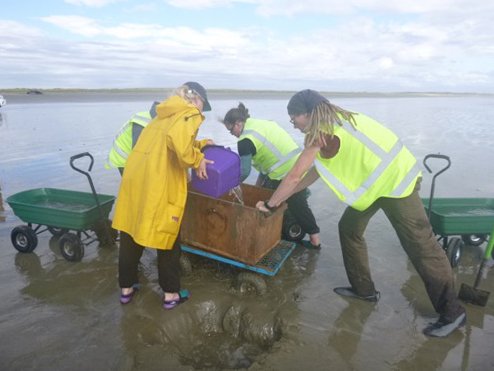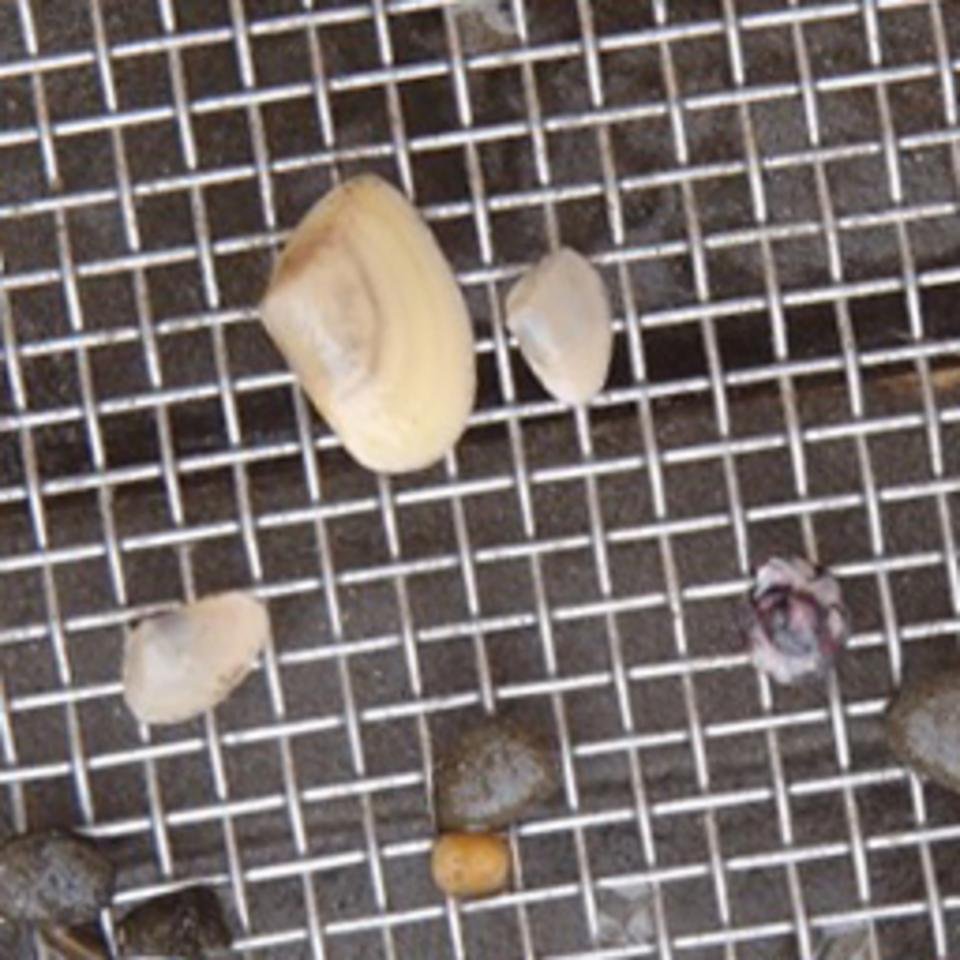Concern over the fall in juvenile toheroa numbers reported in Dragonfly’s 2013 survey prompted a follow-up survey of Oreti Beach this summer. The survey was funded by the Ministry for Primary Industries (MPI) with co-funding from Waihōpai Rūnaka, Te Rūnanga o Ngāi Tahu, Environment Southland, the Department of Conservation and Invercargill City Council.
Dr Katrin Berkenbusch and Invercargill Ngāi Tahu kaumātua Michael Skerrett worked to secure the funding from MPI, iwi and local agencies. Katrin led this survey as well as the previous survey.
“When the 2013 results showed that there were only one third of the juveniles found in 2009 (2 million down from 6 million), we wondered what on earth was going on out there,” says Michael.
“It’s a bit worrying. We’re seeing quite a lot of erosion on the beach, and we know from our other studies that the juveniles are affected by driving on the beach, so we thought we should try and see what was happening with the recruitment.”
Toheroa are New Zealand’s largest shellfish and are now only found on a handful of beaches around the country. Their spat settle at the top of the tide, where they are most vulnerable to driving, and migrate down the beach as they grow.
“Oreti is quite special. Toheroa don’t grow in many places because they need a wide, flat beach. Historically they were an important source of food for local Māori because many crops wouldn’t grow this far south. We want them to be a resource for future generations, and for that we need to ensure there is a viable population.”
Michael says that other studies have shown how much people value the beach. He hopes that a new education campaign to stop rubbish dumping and reduce driving on the beach will help the population recover.
“We’ve also worked with the organisers of the Burt Munro Challenge, an annual beach motorcycle race. They were able to make a few small changes to minimise the impact on the beach. We’re working across the community to get the best solutions we can.”

Katrin was pleased to be able to build on previous work by securing funding for another survey sooner than the next scheduled MPI-funded survey. It took 10 days for her team of 9 to complete the sampling.
“It’s logistically challenging to work along 18 km of beach, and you have to be very strategic to catch the low tides in as many places as you can at any one time. It was full-on but went really, really well. This time a member of the local iwi joined us – it’s good to be building these relationships.”
The results of the survey will be presented in Invercargill and published by MPI later in the year.
Download the MPI 2013 fisheries assessment report or read a news story about our beach survey work.


